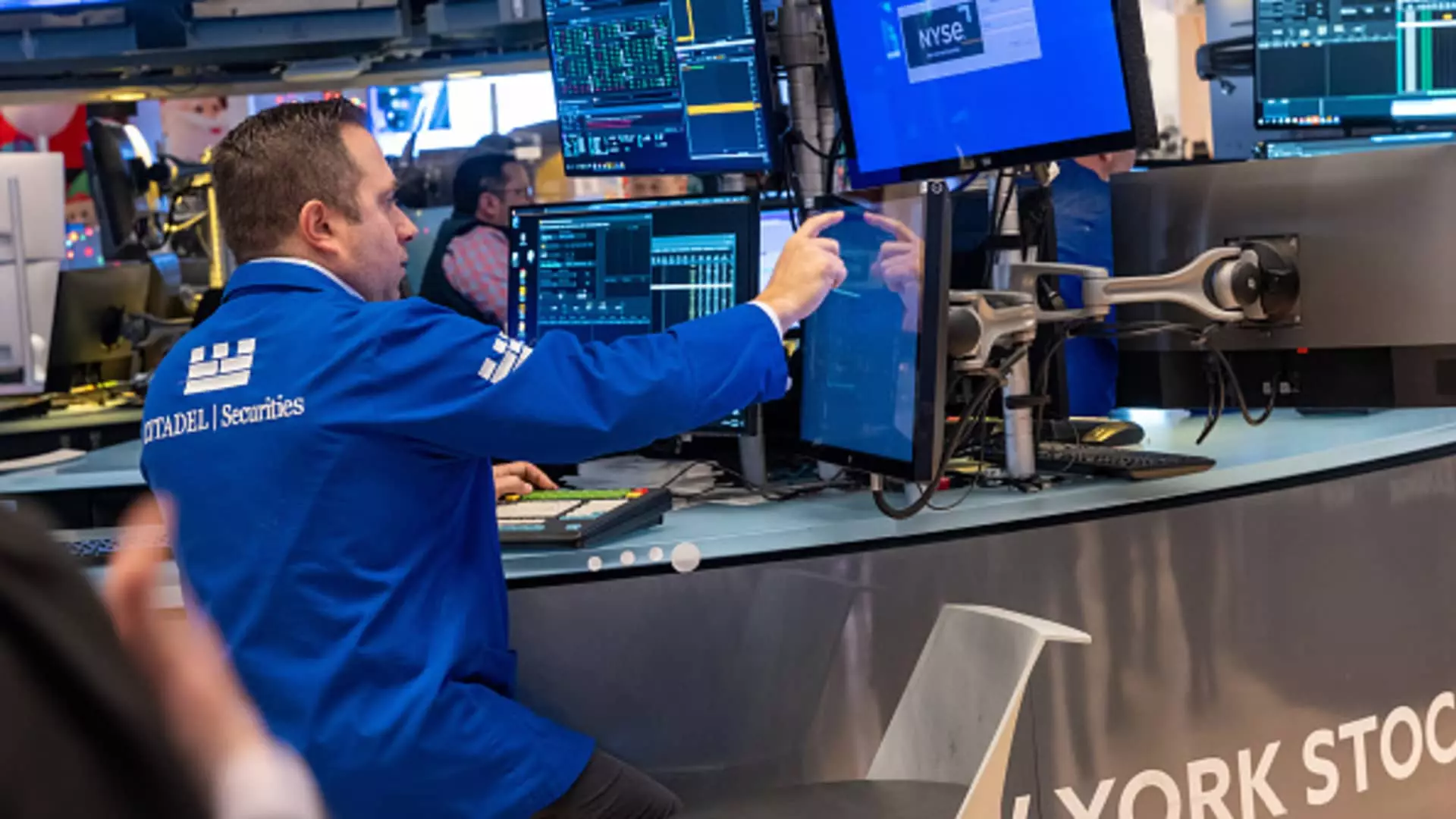The financial markets experienced a significant downturn on Friday, driven by the unexpected strength of the U.S. job market as reflected in the December employment report. This report not only defied market expectations but also cast a shadow over Wall Street’s prospects for future interest rate reductions by the Federal Reserve. With the Dow Jones Industrial Average plummeting by 592 points, or 1.4%, alongside comparable losses in the S&P 500 and Nasdaq, the day painted a bleak picture for investors.
U.S. payrolls surged by 256,000 in December, starkly surpassing the Dow Jones consensus estimate of a mere 155,000. Such robust job growth typically signals a thriving economy; however, it simultaneously raises concerns about persistent inflation and may prompt the Federal Reserve to reconsider its position on interest rates. The unemployment rate, which was anticipated to remain stable at 4.2%, unexpectedly dropped to 4.1%, further adding complications to the market’s reaction. The bond market responded promptly, with yields on 10-year Treasury notes spiking to their highest levels since late 2023, indicating a tightening grip of monetary policy ahead.
Wells Fargo’s senior market strategist, Scott Wren, aptly summarized the conundrum: “Good news for the economy but not for the markets.” The juxtaposition of positive economic indicators and negative market reactions reflects the complex understanding of investor sentiments—while strong economic fundamentals suggest growth, higher interest rates could dampen market performance, especially for growth stocks characterized by higher valuations.
As trading unfolded, it became clear that sectors most sensitive to the potential for rising borrowing costs were hit hardest. Prominent technology stocks, including Nvidia and AMD, faced steep declines of 2.5% and 5.2%, respectively. The falls reflect a broader trend where investors braced for tighter monetary conditions, compelling them to reassess stock valuations amidst the backdrop of escalating interest rates. The Russell 2000 index, representing small-cap stocks—another group particularly vulnerable to interest rate hikes—witnessed a decline exceeding 2%.
The reaction observed on Friday underscores a pervasive fear among traders regarding inflation risks. The University of Michigan’s consumer sentiment index corroborated these fears, coming in at 73.2, lower than the forecast of 74. This decline was exacerbated by rising inflation expectations for the next year, which surged to 3.3% from the previous 2.8%. The potential for higher consumer prices tends to unsettle investors, prompting reassessment of risk in various asset classes.
Traders, now heavily leaning toward the expectation that the Federal Reserve will refrain from further rate cuts, perceived a 97% probability that rates will hold steady in the upcoming January meeting. The sentiment had shifted significantly; projections for a March rate cut dwindled from 41% to a mere 25% following the job report. Market participants are navigating a precipice defined by both economic improvement and the specter of rising rates that could chill corporate earnings growth.
LPL Financial’s chief strategist, Adam Turnquist, highlighted the dichotomy inherent in the prevailing narrative: despite the short-term market turbulence, the underlying economic indicators suggest a healthier outlook. He cautioned against losing sight of the real message conveyed by rising interest rates—the economy is performing better than anticipated, potentially leading to increased earnings and a lower likelihood of recession.
Friday’s market plunge serves as a reminder of the delicate balance that exists between economic growth and investor sentiment regarding interest rates. As 2025 progresses, the intersection of unexpected economic strength and heightened market volatility will demand close attention from investors. Ultimately, while the current market dynamics may seem unfriendly, a deeper understanding of the economic landscape reveals that this turmoil could lay the groundwork for longer-term gains as conditions stabilize and clarity emerges. Understanding this complexity is crucial as investors chart their paths forward amidst uncertainty.

